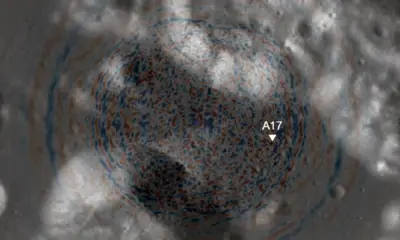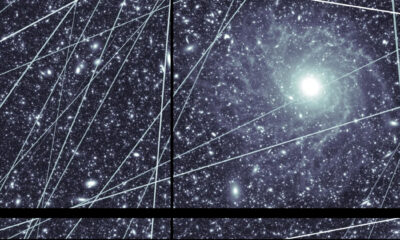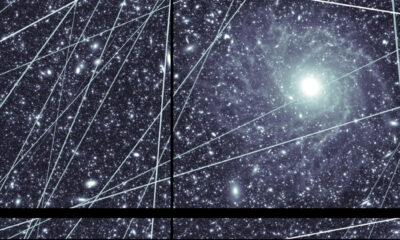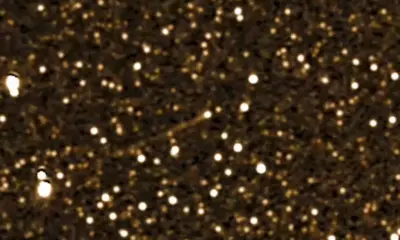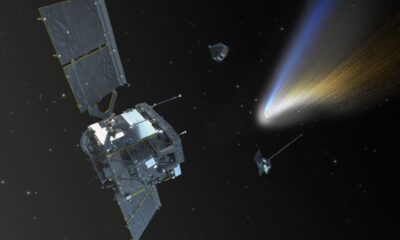Science
Discover the Waxing Gibbous Moon: October 6 Insights
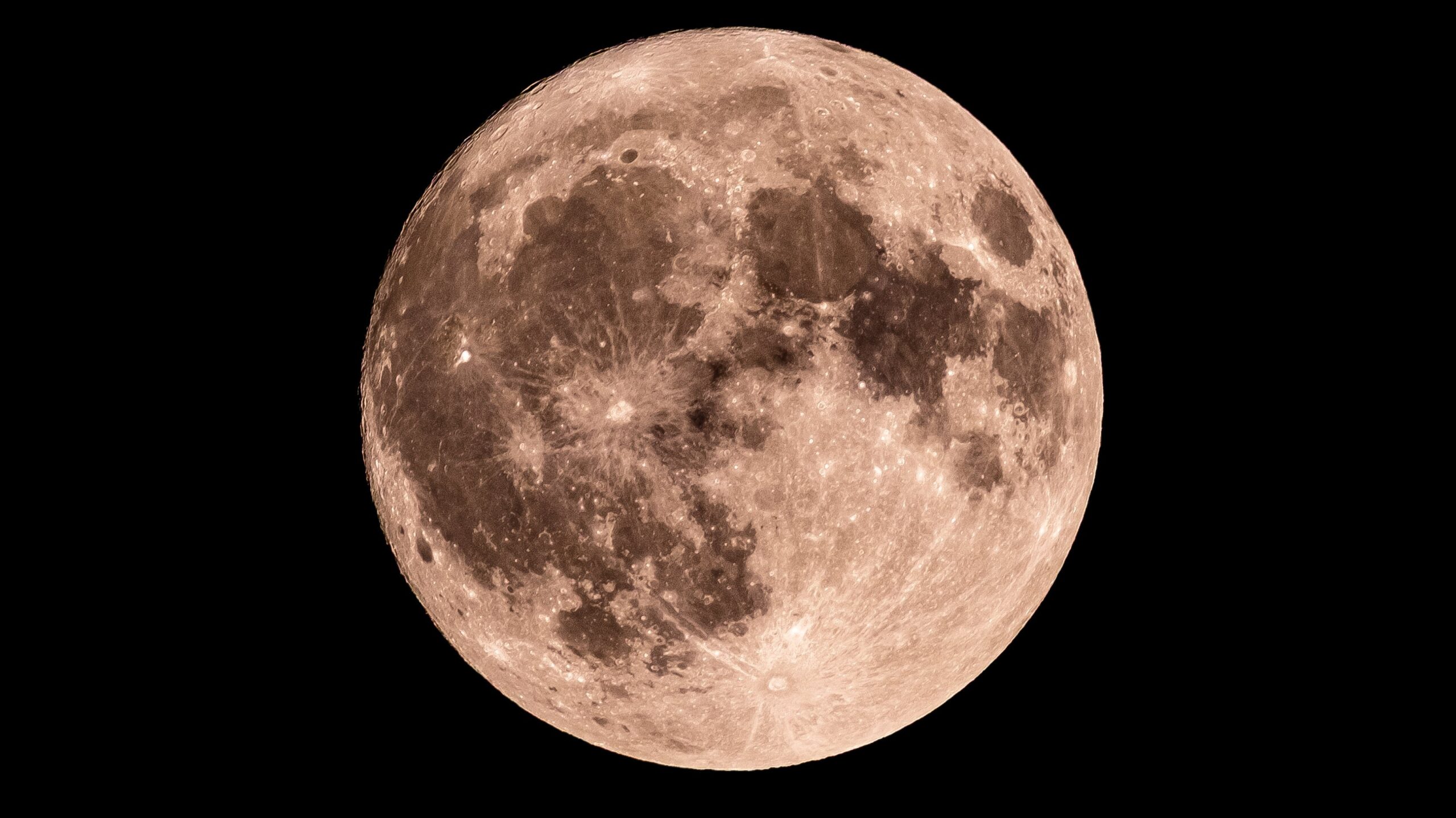
As of October 6, 2023, the moon is in the Waxing Gibbous phase, with approximately 99% of its surface illuminated. This celestial event comes just a day before the full moon, which will occur on October 7. During this phase, the moon appears nearly full, providing a stunning sight for both casual observers and astronomy enthusiasts.
The lunar cycle, which lasts about 29.5 days, includes eight distinct phases. Each phase reflects the changing angles between the Sun, Moon, and Earth, determining how much of the moon’s surface is visible from our planet. According to NASA, the phases range from a New Moon, where the moon is not visible, to a Full Moon, where it is completely illuminated.
What to Observe Tonight
Tonight’s clear skies will offer ideal viewing conditions for those wishing to explore the moon’s surface. Without any visual aids, observers can spot notable features such as the Copernicus Crater, the Mare Fecunditatis, and the Mare Tranquillitatis. For those equipped with binoculars, sights like the Apennine Mountains, the Mare Nectaris, and the Gassendi Crater become accessible. A telescope will allow viewers to delve deeper, revealing historical landing sites such as Apollo 15 and Apollo 17, along with the Fra Mauro Highlands.
As the moon approaches its full form, many people take the opportunity to engage with this natural phenomenon. The moon has long captivated human imagination, inspiring countless myths, art, and scientific inquiry.
Understanding Moon Phases
The moon’s phases are a result of its orbit around Earth, which causes varying amounts of sunlight to reflect off its surface. From our vantage point on Earth, we consistently see the same side of the moon, yet its illuminated portion changes throughout the lunar cycle. The eight main phases are as follows:
– **New Moon**: The moon is positioned between Earth and the sun, rendering it invisible.
– **Waxing Crescent**: A small sliver of light appears on the right side.
– **First Quarter**: Half of the moon is lit, resembling a half-moon.
– **Waxing Gibbous**: More than half of the moon is illuminated, but it is not fully visible yet.
– **Full Moon**: The entire face of the moon is illuminated.
– **Waning Gibbous**: The moon begins to lose light on the right side.
– **Last Quarter**: The left side of the moon is illuminated, forming another half-moon.
– **Waning Crescent**: A thin sliver of light remains on the left side before the cycle resets.
By understanding these phases, observers can better appreciate the beauty and complexity of the moon’s journey through the night sky. Whether for scientific study or personal enjoyment, tonight’s Waxing Gibbous moon provides an excellent opportunity to connect with our celestial neighbor.
-

 Technology5 months ago
Technology5 months agoDiscover the Top 10 Calorie Counting Apps of 2025
-

 Health3 months ago
Health3 months agoBella Hadid Shares Health Update After Treatment for Lyme Disease
-

 Technology7 days ago
Technology7 days agoOpenAI to Implement Age Verification for ChatGPT by December 2025
-

 Health3 months ago
Health3 months agoErin Bates Shares Recovery Update Following Sepsis Complications
-

 Technology4 months ago
Technology4 months agoDiscover How to Reverse Image Search Using ChatGPT Effortlessly
-

 Technology3 months ago
Technology3 months agoElectric Moto Influencer Surronster Arrested in Tijuana
-

 Technology1 month ago
Technology1 month agoDiscover 2025’s Top GPUs for Exceptional 4K Gaming Performance
-

 Technology5 months ago
Technology5 months agoMeta Initiates $60B AI Data Center Expansion, Starting in Ohio
-

 Technology5 months ago
Technology5 months agoRecovering a Suspended TikTok Account: A Step-by-Step Guide
-

 Health3 months ago
Health3 months agoAnalysts Project Stronger Growth for Apple’s iPhone 17 Lineup
-

 Health5 months ago
Health5 months agoTested: Rab Firewall Mountain Jacket Survives Harsh Conditions
-

 Lifestyle5 months ago
Lifestyle5 months agoBelton Family Reunites After Daughter Survives Hill Country Floods

